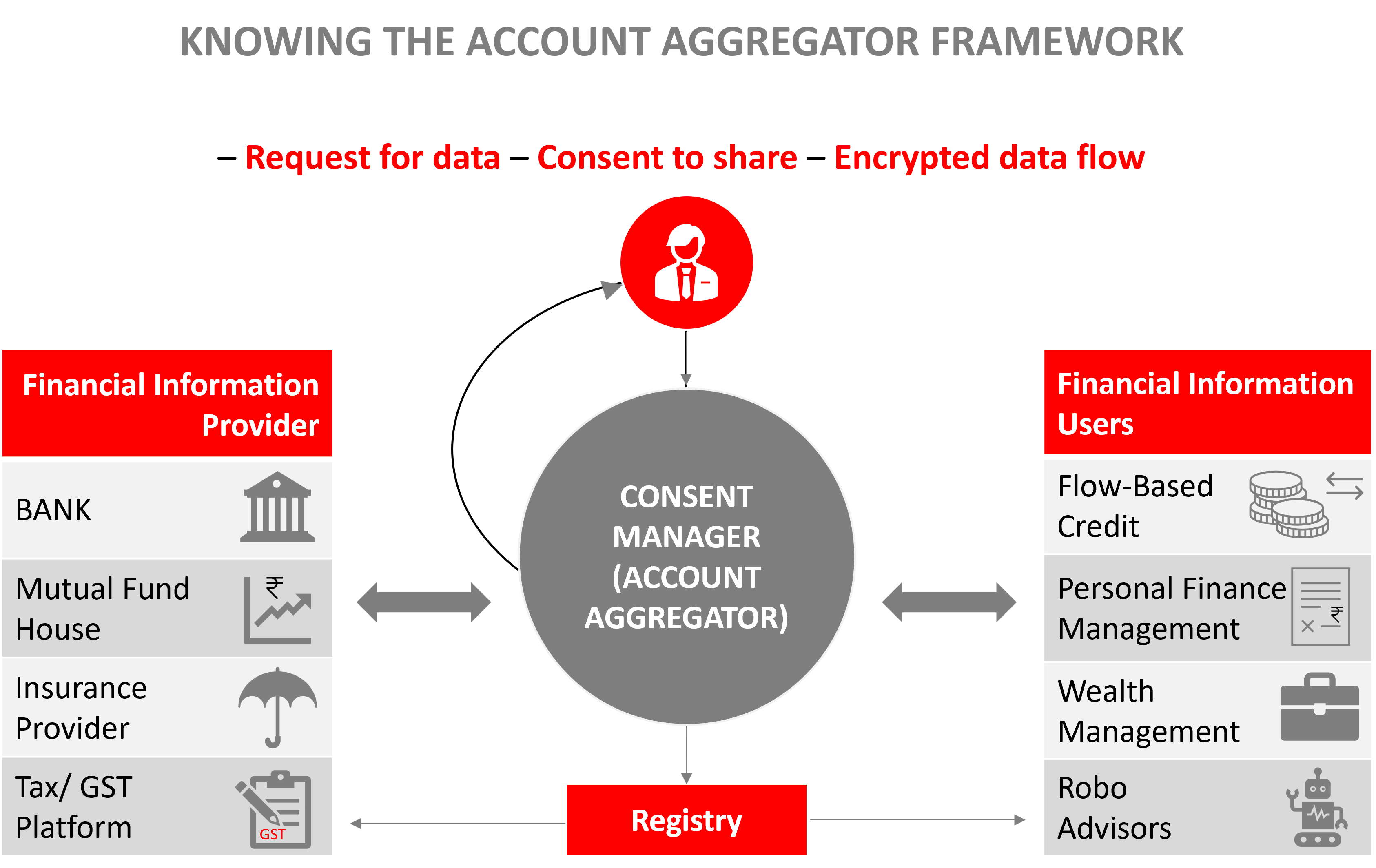The Finance Ministry last week unveiled the Account Aggregator (AA) network in banking with eight of India’s largest banks. An Account Aggregator Network is a financial data – sharing system. The network will revolutionize the investment and credit markets, and shall give millions of customers greater access and control over their financial records and expanding the potential pool of customers for lenders and fintech companies. It is a kind of dashboard of all our financial data.
About Account Aggregator
The Account Aggregator (AA) empowers the individual with control over their personal financial data.
- An AA facilitates sharing of financial information in a real-time and data – blind encrypted manner between regulated entities (Banks and NBFCs)
- It enables’ flow of data between Financial Information Providers’ (FIPs) and Financial Information Users’ (FIUs)
- It is a type of RBI regulated entity (with an NBFC – AA License) that helps an individual securely and digitally access and share information from one financial institution they have an account with to any other regulated financial institution in the AA network. However, the data shall not be shared without the consent of an individual.
- The RBI in 2016 approved AA as a new class of NBFC, whose primary responsibility is to facilitate the transfer of user’s financial data with their explicit consent.

Impact of Account Aggregator on the common man’s life
Indian Financial system involves many processes for consumers today - sharing of physical signed and scanned copies of bank statements, running around to notarise and stamp documents or to share personal username and password to give your financial history to third party. The AA network would replace all these with a simple, mobile based and safe digital data access & sharing process.
The Individual’s bank only needs to be connected to the AA Network. AA system in banking has been launched with the eight largest banks in India, four are already sharing data on a consent basis (Axis, ICICI, HDFC and IndusInd Bank) and four are going to be enabled soon (SBI, Kotak Mahindra Bank, IDFC First Bank and Federal Bank).
Type of Data that can be Shared
Today, banking transaction data is available for sharing across banks that have gone live on the network.
Gradually, the AA framework will make all financial data available for sharing, including tax data, pension data, securities data (mutual funds and brokerages), and insurance data available to consumers. It will also expand beyond the financial sector to make healthcare and telecommunications data accessible to the individual through AA.
Who all can view the data? Is data secure?
Account Aggregators cannot see the data; they merely take it from one financial institution to another based on individual’s direction and consent. AAs are different from technology companies that collect someone’s data and build a detailed profile of someone.
The data shared by AAs is encrypted by the sender and can only be decrypted by the recipient. The end to end encryption and use of technology like the ‘digital signature’ makes the process much more secure than sharing paper documents.
Few Highlights
- Consumer’s decision to share data – As per the AA network it is wholly the decision of the consumer to share the data or not. It is fully voluntary for consumers to register with an AA.
- Registration of customer with an AA – A customer can register with Account Aggregator through App or website. Account Aggregator shall provide a handle which can be used during the consent process. At present 4 apps are available for download Finvu, OneMoney, CAMS Finserv, and NADL) with operational licenses to be Account Aggregators’.
- There is no need to pay the Account Aggregator a separate fee by the customer for using this facility. Some Account Aggregator may be free as they charge fees from financial Institutions. Some may charge a small user fees.
Our View
We believe that the AA framework will ensure a swift, secure and transparent data sharing, a reduced cost of credit by elimination of physical documents, authenticity for Financial Information Users (FIUs) and will soon extend to the domain of insurance and mutual funds.
Various stakeholders are hoping that as the AA framework will evolve, the architecture of the same can be extended to various sectors. The primary benefit of account aggregation will be the ability for consumers to access their account information and financial insights, anytime, anywhere. Better insight means better-informed decisions. The consumers are the biggest beneficiaries, as the Account Aggregator is expected to empower the individual with control over their personal financial data, which would otherwise reside in silos.
Download